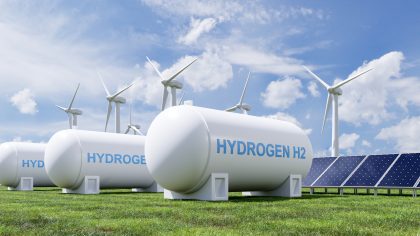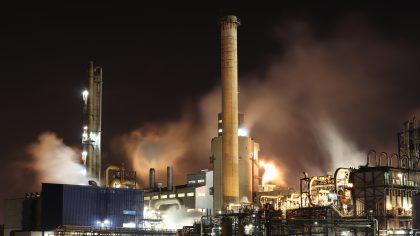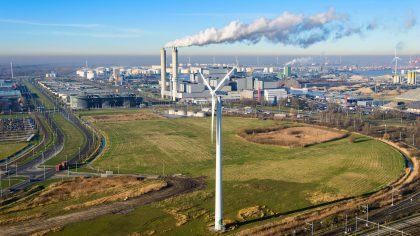All information in the datasheets is also available in ESDL (Energy System Description Language). You can find them in the Energy Data Repository (EDR).
Hydrogen direct reduction steelmaking (HYBRIT) with external hydrogen production
Direct reduction of iron is the solid state reduction of iron oxide into iron. The principle of hydrogen direct reduction is that pre-heated iron ore is converted into direct reduced iron (DRI) in a shaft reactor, with hydrogen acting as the reducing agent and energy source. The reactor produces direct reduced iron (DRI), also called sponge iron, which is a porous, solid iron with low carbon content (below that of pig iron from a blast furnace). It can then be either compacted into hot briquetted iron (HBI, a briquette of DRI compacted at 650 degC to at least 5000kg/cubic meter to facilitate storage and transport) or fed directly into an electric arc furnace (EAF) to produce steel.
The hydrogen can be supplied from any external source. In the case of electrolysis, water produced in the shaft (through the reaction of H2 and O2) can be supplied back to the electrolyser. The EAF melts and converts the iron into liquid steel, either based on 100% DRI or HBI, or in combination with steel scrap. Theoretically the process can be designed to operate with either methane or hydrogen gas as the reducing agent (or a mixture of these gases), which could allow a gradual transition towards green hydrogen as the main reducing agent for the steel sector. This factsheet looks at the case where 100% DRI and 100% hydrogen are used, and hydrogen is purchased from an external source. Some carbon content (typically a small amount of pulverized coal, bio-methane or other biogenic carbon source is used) needs to be added to the metal in the EAF to create steel with the right composition.
Natural gas-based DRI processes have been widely commercially applied worldwide. Hydrogen direct reduction steelmaking technology was first applied commercially in Trinidad in 1999 to 2001 and 2004 to 2016, under the name Circored. The project was mothballed by ArcelorMittal in 2017. That project produced direct reduced iron (DRI) from iron ore fines in fluidised bed reactors with hydrogen from steam methane reforming (SMR) as the reducing agent. The project was shut down in 2016 due to cost-cutting at ArcelorMittal, in an environment of low steel prices and potential electricity and gas price increases in Trinidad.
HYBRIT is a hydrogen direct reduction process currently under development that uses iron ore pellets for steelmaking in a shaft reactor at about 800 degC, in combination with steel conversion of DRI in an electric arc furnace (EAF). The project aims to have sufficient hydrogen storage on site so that electrolysers powered by intermittent renewable energy sources can be used to produce the required hydrogen. A key benefit of this technology, according to researchers, is its flexibility of operation, with potential for storage of H2 and of briquettes of iron, allowing for the shaft where the reduction reaction takes place (which is designed to operate continuously) to operate independently from the EAF (which operates in batches) and the electrolyser (which has operating costs that are dependent on electricity prices). The project aims to eliminate all fossil fuels from the steelmaking process, though a carbon source is needed to give the steel the proper characteristics. The long term ambition is to use high-quality biomass to provide this carbon in the EAF, but current designs sometimes still include a small amount of pulverized coal to provide the necessary carbon content of the steel. The reference for this factsheet is the HYBRIT process, with coal as a source of carbon and an external H2 source.
(Vogl et al., 2018; Dolci, 2018; IIMA, 2020)
Downloads
Hydrogen direct reduction steelmaking (HYBRIT) with external hydrogen productionGerelateerde publicaties

Effecten van waterstofimport op de industrie in Nederland
Exploration of the effects of (partially) replacing Dutch fertiliser and iron and steel production with imports

De weg naar toekomstbestendige petrochemie
Exploration of transition strategies in Dutch refineries and organic chemicals industry for climate policy

Toename aandeel hernieuwbare warmte
Haalbaarheid van de RED III-doelstellingen met het huidige beleid